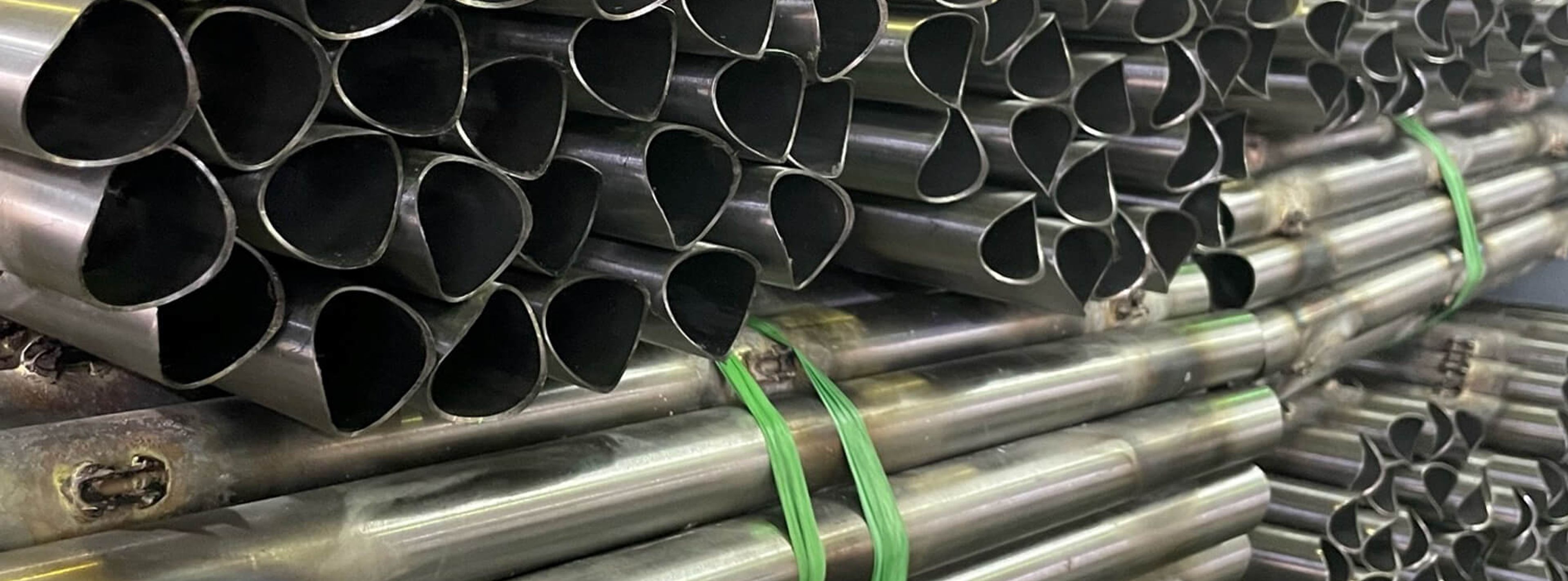The Ritchey Guide to Butted Steel for Bicycle Frames
Double butting. Triple butting. Steel butts. Chicken butts. It may sound funny but butting is serious business and means a lot for your riding. Read up here to learn all about steel tube butting.
If you’ve spent any time drooling over the hottest new steel bikes on the market (like this one!), you’ve inevitably seen the phrases “triple-butted” or “double-butted.” After a brief chuckle and a moment to compose yourself, you’ve no doubt wondered: “what’s up with all these butts? And why should I care about them?”
Well, friends, fear not. We’ve put together this handy explanation of all things butted steel to answer both of those questions.
What is butted steel tubing?
A butted steel tube has a constant outer diameter but varying wall thickness throughout the length of the tube. In steel bicycles, tubes are usually either double or triple-butted. That means there are either two or three (respectively) different wall thicknesses throughout its length, each with a slight taper in between. These extra butts are on both ends of the tube, leaving the tube’s middle section with the thinnest wall thickness.
Think of a butted steel tube as the complete opposite of Tom’s mustache: thinner in the middle and thicker on either end.
Whether a tube is single, double, or triple-butted, the outside diameter is almost always constant. However, as with most things in life, there are exceptions to this. And those exceptions are usually found on the seat tube. Sometimes an external butt is added to the top side of the seat tube to ensure a proper fit with a seat post without losing any tube strength.
So how does one determine a tube’s butting? If you’re buying a bike, check the manufacturer’s website for butting information. If you’re building a bike and need to check your tubesets butting, there’s really one tool for the job: the Butt Checker.
What are the benefits of butted steel tubing?
By varying a tube’s wall thickness in critical spots, the resulting bike has a much more comfortable and compliant ride. The thinner middle sections of the tube provide just the right amount of compliance, while the thicker, welded ends provide stiffness as you power up a climb or out sprint your riding buddies to the bar. Reducing material in the middle of the tube also drastically reduces the overall weight of the frame.
Butting also increases strength in areas that need it most without adding a ton of extra weight to the rest of the bike. While you can certainly build a bike out of non-butted straight gauge steel tubing, there’s a higher chance of the frame failing at the welds. Unless it’s a lugged frame.
Lugged frame construction moves the extra material, or butts, to the outside via the socket-like lugs into which single-butted tubesets can be brazed. By skipping the lugs and adding the additional material to the inside of the tube, frame builders and manufacturers can weld the tubes together directly at the joints keeping weight down.
The Ritchey Difference
We use our own proprietary, triple-butted Ritchey Logic tubing for all of our steel bikes. We might be a bit biased, but we’re of the opinion that our steel tubing is the best in the world and maximizes all the benefits that steel has to offer. While we’ve made updates here and there to our tubing, today’s Ritchey Logic steel is much the same as it was when Tom first developed it back in 1984.
Tom originally designed Ritchey Logic tubing for his own lugless style of construction. He later refined it for tig-specific construction to allow for an even shorter butting profile to save weight and enhance the ride quality. He added elongated, thin-walled center sections and rethought the single bend chainstay combined with an ovalized seat tube at the bottom bracket to stiffen this region for better power transference.
Those attributes, along with the custom triple-butted profile of Ritchey Logic tubing, all combine to deliver that legendary Ritchey ride quality. It’s why our bikes are so resilient over super harsh terrain and unbelievably responsive under hard efforts.
But it isn’t just our frames that get a butting treatment.
While our handlebars are made of drawn alloy and not steel, we still use custom-butting profiles in their construction. While the application might differ from frame butting, the principle is the same. Adding extra butting to key spots of a handlebar adds compliance and strength to the bar without increasing weight. Depending on the level of the bar, we use either a double-butted (Comp) or a triple-butted (WCS) profile on all of our handlebars.
So there you have it. You should now have enough butt knowledge to better understand the differences in double- and triple-butted steel and why they matter to a bike’s overall ride quality.
Join now for engaging stories, exclusive offers and product news delivered right to your inbox.


